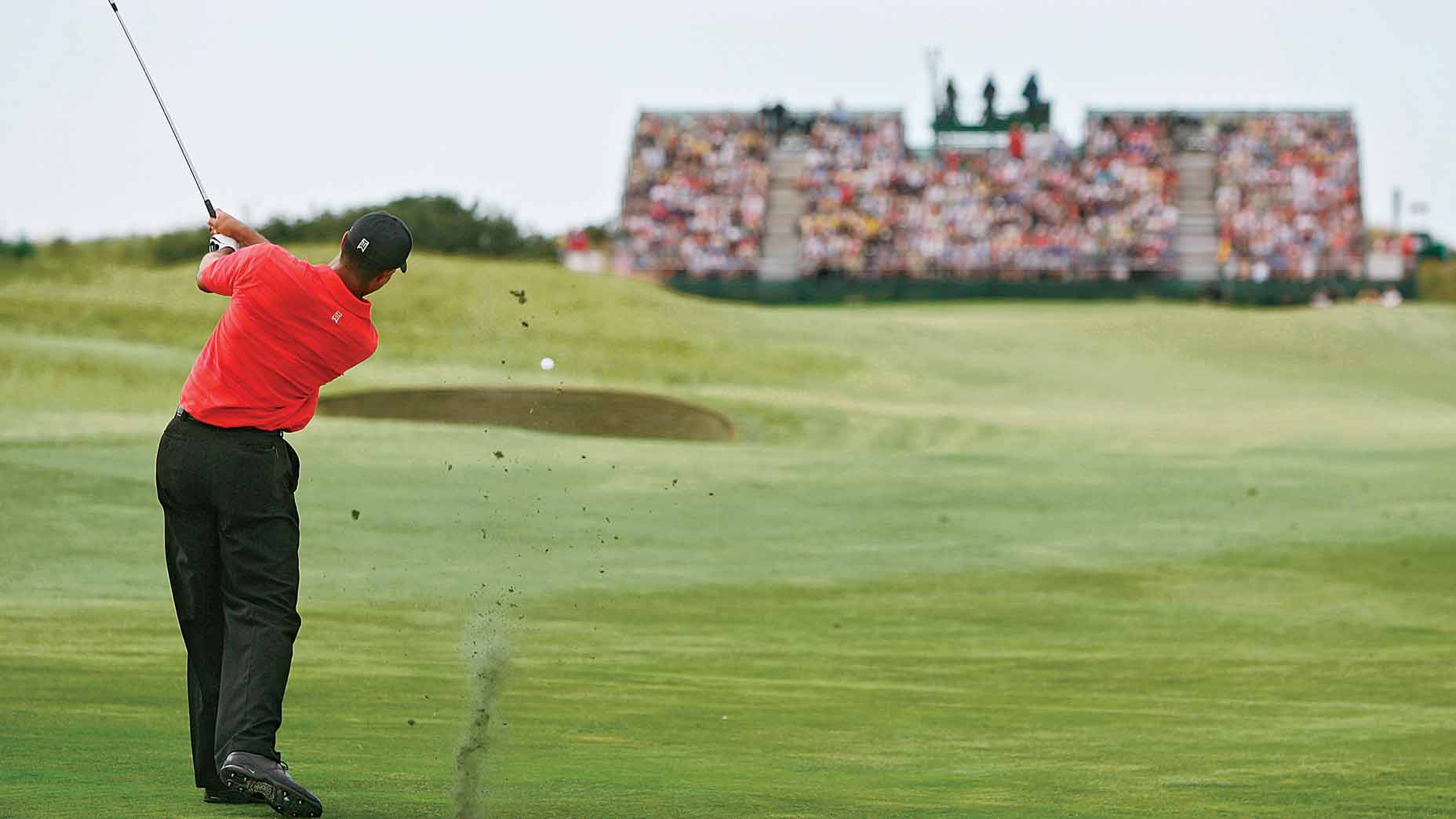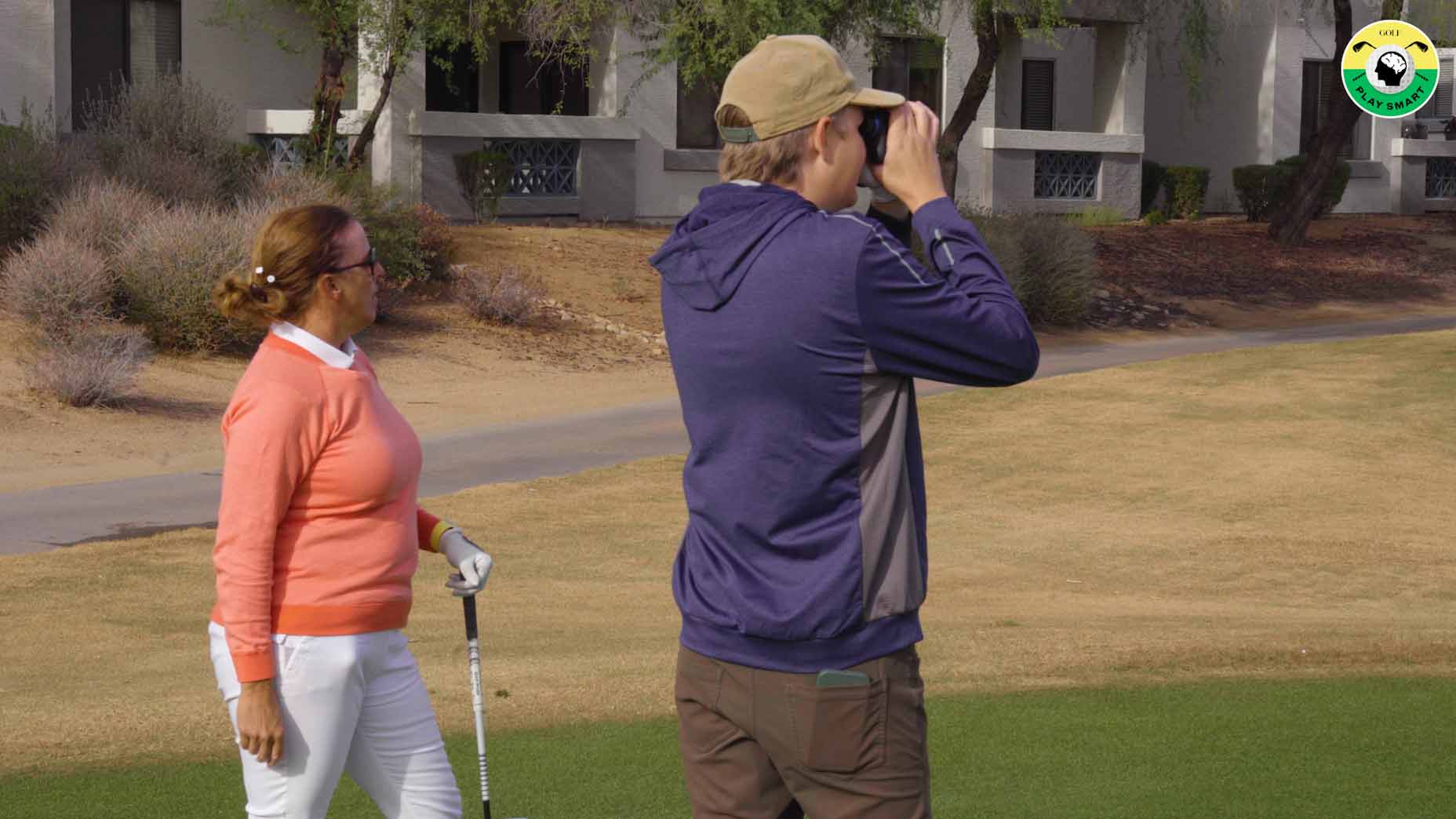Playing links golf? These 10 things will help you adapt to the conditions

Links golf presents difficult challenges, but these 10 things will help you play your best.
Getty Images
Welcome to Play Smart, a regular GOLF.com game-improvement column that will help you play smarter, better golf.
There are lots of different types of golf course design out there, but links golf is one of the most legendary, with the layout presenting unique challenges for golfers of all skill levels.
So what technically defines a links course? There are certain guidelines, as the course must sit along the coast and have sandy soil underneath. This is why many of the true links courses are found in Scotland, Ireland and England.
With this week’s British Open set to tee off from the Royal Liverpool Golf Club, there isn’t a more popular links course on the planet at the moment. And while many amateur golfers won’t have the opportunity to play some of the esteemed links courses hosted by the Open Championship, there are still many to choose from around the world, each of which offer a personalized (and difficult) track.
Since links golf isn’t the same as playing other course designs like parkland or sandbelt, players must change their approach, making sure they account for a number of different factors.
Understanding how to adjust your decision-making will go a long way in determining how low you shoot.
In today’s Play Smart lesson, GOLF Top 100 Teacher Michael Hunt explains the 10 most important things to remember when playing links golf, which will help you prepare and adapt your golf game prior to teeing off. Take a look below at his tips!
The 10 things you must adapt while playing links golf
In addition to being a GOLF Top 100 Teacher, Hunt has lots of experience playing links golf, having visited either Scotland or Ireland over 15 times already, with an upcoming trip again this August.
With that amount of insight, Hunt says the below are the 10 things he teaches his students when they play a links course — so use his tips to your advantage.
Avoid your 60-degree wedge. This is a club hardly used over in Scotland and Ireland by the locals — since they know how important it is to keep the ball low to the ground. In fact, most caddies scoff when a player asks for the 60-degree wedge.
Wind will impact your putts. You have to take the wind into consideration; even while putting. Whether it’s downwind, crosswind or a stiff wind at your face, the ball will move — so adjust your putts accordingly.
Greens will be much slower. The greens tend to be a little slower over in Ireland and Scotland. Work on your distance control and the length of your stroke, rather than focusing on trying to sink the putt. With lots of undulation, putts are going to move all over the place, but you’re in control of your speed.
Take your medicine. If you get in a pot bunker or in the heavy gorse, don’t try to be a hero. Instead, focus on simply advancing the ball back into the fairway with a high-lofted club. Don’t be surprised if you have to go sideways or even backwards, depending on any obstacles in front of you.
Manage the wind. You could play in 1-3 clubs of wind, but don’t play them the same all the time. If you hit two clubs into the wind, you may just need to drop one club downwind.
Work on a lower ball flight. Tiger Woods was known for using a stinger shot in many of his Open Championship victories. This meant using a low-lofted iron and keeping the ball low off the tee — which gave him better control of his first shots. You may not have Woods’ ball-striking ability, but you can still keep the ball low by focusing on your ball position, by clubbing down and by having a shorter finish. It’s important to remember to avoid swinging harder.
Treat your putter as a secret weapon. Links golf is the perfect opportunity to get a little funky with your putting. You can putt from all around the greens, and, at some courses, up to 40 yards off of the green. If you have the touch, using a Texas wedge to shave some strokes isn’t the worst game plan.
Crosswinds will wreak havoc. If you happen to put side spin on the ball and you’re dealing with a crosswind, watch out. This is where aim and alignment is so important, as you must really pick good lines and trust yourself. Mother Nature will take it from there.
Be prepared for rain. As mentioned above, a true links golf course runs alongside a coast; meaning there’s a higher probability of moisture in the air. So while you may get lucky and avoid rain, it’s always best to be prepared in case some drops do occur. So get yourself a good rain suit, waterproof and warm shoes, a hat and some rain gloves. This is all part of the experience of playing links golf.
Prepare your body. There are lots of times when I end up playing 36 holes when I travel to Scotland and Ireland — which isn’t atypical for many golfers making the journey across the pond. To help your body withstand the toll, I suggest walking prior to the round and working in a stretching program to warm up your body. The last thing you want is an injury.















